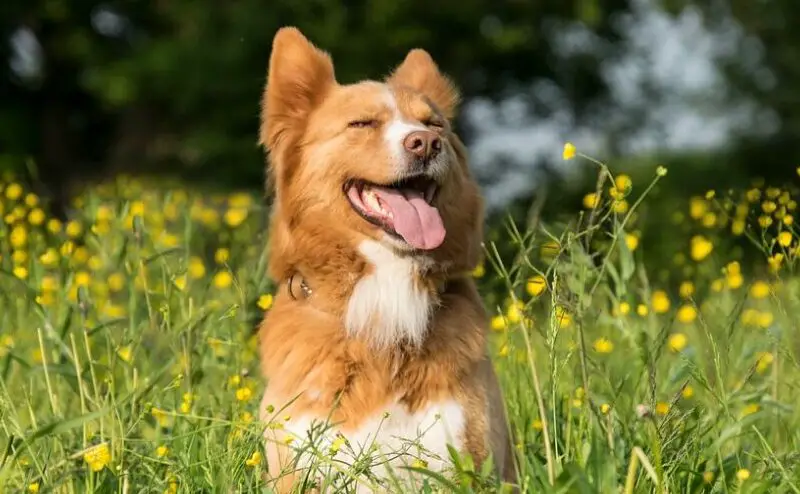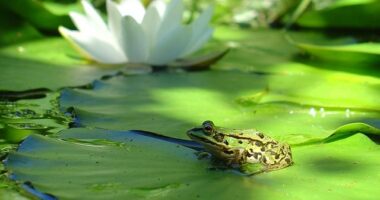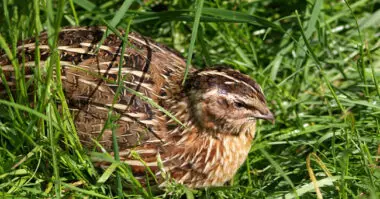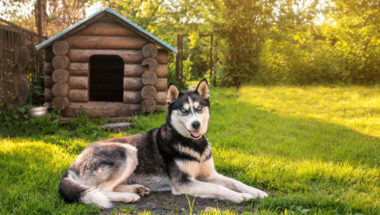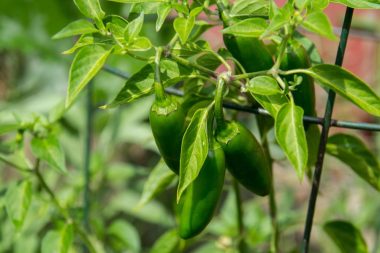In spring and summer, plants and flowers that are poisonous to dogs represent a medium risk of intoxication. But some species are truly deadly poisons.
Be aware that most dogs do not consume a lot of them, simply because… it’s not good! It is in particular the case of many plants of the countryside, meadows, undergrowth… what falls very well: they are often the most toxic of all.
The dogs most at risk are often the youngest, even if we have seen adult dogs eating poisonous flowers.
Beware of the flowers but also :
- to the water in the vase which can be toxic
- to the storage of seeds as for the products of the garden
Contents
Symptoms of flower intoxication
Remember that every dog reacts differently and the symptoms of poisoning described on the Internet are only the most common.
If you see your dog chewing and spitting or eating a possibly poisonous plant, a good immediate reaction is to wash his mouth (with water) because many plants are irritating to the mucous membranes. If your dog vomits, he has eaten it, but this is a good sign: the poison is coming out.
Poisoning with a flower or plant usually occurs if your dog starts drooling excessively, vomiting and/or has diarrhea, which are common symptoms.
More severe symptoms: loss of appetite and trembling. It is not uncommon for flower poisoning in animals to cause anorexia and lethargy: the dog is not hungry and is abnormally calm.
How to react in case of intoxication?
The only valid reaction is to take your dog to the nearest veterinarian. Make sure you know the name of the plant your dog is ingesting. If you don’t know the name, take the plant with you.
Record any changes in your dog’s behaviour so that you can report them to the veterinarian.
In any case, it is important not to :
- Make your dog regurgitate
- Give him food and water without the advice of the veterinarian.
- Give him/her medications that would normally be given to a human being
11 plants that are toxic to dogs and the symptoms they cause
1. Aloe Vera
And yes, Aloe Vera is on the list of plants toxic to dogs. We know how much this plant is adored by humans, especially for its soothing benefits on the skin.
However, it’s less fun if it makes your dog want to nibble on a leaf. The saponin contained in the plant can irritate the digestive system and cause acute diarrhea if ingested.
2. Ivy
Ivy is certainly a very beautiful climbing plant, especially when it clings to the facade of your house or is used as decoration for your interior. But things can get complicated if your dog ingests its leaves.
Symptoms can range from minor, such as breathing difficulties or rashes, to serious, such as paralysis or even coma. So make sure this beautiful (toxic!) plant is well out of reach.
3. The Jade Tree, or “Crassula Ovata”.
The jade tree, also known as crassula ovata, is a fat plant popular for its properties to resist its environment. It is toxic to pets and can cause vomiting and a slowing of the heart rate, in addition to a symptom that is difficult to identify: depression.
4. The Dieffenbachia
The dieffenbachia is a rather widespread indoor plant which is perfect to clean the air which surrounds it. It is nevertheless very toxic. Chewing its leaves can cause severe swelling and burning of the mouth and tongue, which can lead to breathing difficulties and, in the worst cases, death.
5. The Philodendron
Like dieffenbachia, philodendron is a popular choice in houseplants. It is a hardy and low-maintenance plant. Unfortunately if its leaves are ingested, they can cause swelling and burning of the mouth and tongue as well as digestive problems, spasms and even convulsions.
6. The Epipremnum Aureum, or “Pothos,” or “Scindapsus”.
Like its close cousin the Philodendron, the Pothos is a house plant which has very few needs and is thus difficult to kill. This means, however, that it can also cause the same symptoms as the Philodendron if ingested.
7. The Ficus
The ficus is a toxic plant because of the latex it contains. So if your dog chews its leaves, symptoms may include vomiting, diarrhea, irritation, excessive salivation, and inflammation of the mucous membranes of the mouth and eyes.
8. Zamioculcas, or “Plant ZZ”
Attractive to homeowners and office workers because it requires little or no light, Zamioculcas can cause adverse effects such as vomiting and diarrhea.
9. The caladium, or “Elephant Ears”, “Heart of Jesus”, “Angel’s Wings”, or “Heart of Jesus”.
No matter what name you give it, Caladium is a plant adored for its colorful leaves. However, if ingested it can cause swelling and burning of the mouth and tongue, a lot of drooling and vomiting.
10. Dracaena Fragrans
Another beautiful depolluting plant for your home, but toxic for dogs: Dracaena Fragrans. Its leaves are toxic for your dog or cat and can cause vomiting – sometimes with blood – if ingested. They can also cause loss of appetite and depression.
11. Yuca
Every part of Yuca is toxic for the dog. This plant can give him vomiting, diarrhea, paralysis and even put him into a coma.
Plants that are safe for dogs
It is preferable to opt for non-toxic plants for dogs. The species below are safe for dogs and cats. However, a warning message: some cats find them very appetizing:
- Palm tree
- Begonia
- Dwarf Palm
- Marigold
- Lily
- Orchid
- Fern
- The succulents
- Bamboo
Precautions to be taken to avoid intoxications with the plants
Of course, the best precaution to take is not to buy poisonous plants for our dog friends. However, if you want to have some of them, some precautions will have to be taken to avoid Pitou from biting a leaf.
Placing the plants in height is a good solution if you only have dogs. (Beware of cats who are most likely able to get there! Several plants mentioned above are also toxic for felines).
Installing the plants on the counter, on the kitchen table or on shelves on the wall can be a very good solution to avoid an accident. If your dog does not have access to all rooms in the house, putting the plants in the room that is not accessible to him is also a good idea.
The best solution will be, as we will keep repeating, not to buy toxic plants to avoid any accident. You can still get very beautiful non-toxic plants that will embellish your interior space. Rely on the list of non-toxic plants I listed above and do not hesitate to check on trusted websites to verify the toxicity of your new plants!
Summary
When you have a dog and a garden, it is best to avoid growing certain flowers. As soon as spring returns, without being paranoid, let’s be careful that our dogs sniff and “graze” outside – but also in the house, especially if you go on holiday/weekends to relatives who have houseplants.
Don’t be too afraid of the most poisonous summer plants and flowers for dogs: they are very rarely eaten. These include the common castor and foxglove which grow in the countryside and the great hemlock (Conium maculatum).
In fact, the very naughty plants and flowers are also most often the ones that stink the most or have the most disgusting taste.
